

Dibble crowned as Miss Riverton 2025
By Peri Kinder

The lifelong city resident was a student body officer at Riverton High School.
Oliva Dibble will serve the community for the next year as Miss Riverton 2025. The 21-year-old Riverton High graduate was selected from a group of 13 young women during the Miss Riverton competition on March 29 at the Sandra N. Lloyd Community Center (12830 S. Redwood Road).
This was the first pageant competition Dibble had participated in and she said the whole experience was amazing, from getting to know the other contestants to hearing her name called on stage.
“I was very shocked but super excited,” she said. “For one month, I was with the other girls, so it was fun to experience being in that environment with them and learning about the power of womanhood and how smart and incredibly talented all of them were. It was so fun to be there with them.”
Loren DeGraaff and Jane Rutherford make up the Miss Riverton Royalty as 1st attendant and 2nd attendant, respectively. Rutherford served as 2nd attendant in last year’s Miss Riverton Royalty and is thrilled to have the chance to work with Dibble and DeGraaff.
“I’m honestly so excited about the upcoming year and so grateful that I have this opportunity again,” Rutherford said. “If I could say one thing to the girls in this community, it would be just to get yourself out there, because it’s so amazing.”







Dibble ran on the platform “The Language of Music” and said she had a deep connection with music as it helped her express herself in ways that other modalities couldn’t. She plans to use her platform to reach children in the community, especially those with cognitive disabilities, helping them to find new avenues of expression.
She plans to hold monthly music workshops, working with local schools and business partners to get the program started.
“I feel very lucky and very blessed that I get this opportunity,” Dibble said. “Since I have lived here my whole life, it feels fitting to be a representative for girls my age and for younger girls to look up to.”
The event was co-hosted by Nathan Osmond and Miss Utah 2024 Paris Matthews, a former Miss Riverton 1st Attendant. The 13 contestants were scored on a private interview with the panelists, talent, health and fitness, evening gown and an onstage conversation. The new Miss Riverton received a $2,000 scholarship with the 1st attendant winning $1,000 and the 2nd attendant receiving $500.
Dibble sang a version of Joni Mitchell’s “Both Sides Now” for her talent. DeGraaff performed “Got


Olivia Dibble is crowned Miss Riverton 2025 by the outgoing Miss Riverton Kylie Hallett during the Miss Riverton competition on March 29. (Peri Kinder/City Journals)




Riverton Hospital Thanks:
• South Jordan City Fire Stations 61, 62, 63, 64
ThankYou
• West Jordan City Fire Stations 54 and 55
• Unified Fire Authority Station 103 (Herriman)
• Unified Fire Authority Station 115 (Copperton)
EMS, Fire, Law Enforcement andFirstResponders
Join us in celebrating National EMS Week
We would like to take this opportunity to thank you for your dedication and service to our communities.
In celebration of National EMS Week, we invite you to join us for a free BBQ.
• Unified Fire Authority Station 120 (Riverton)
• Unified Fire Authority Station 121 (Riverton)
• Unified Fire Authority Station 123 (Herriman)
• Unified Fire Authority Station 124 (Riverton)
• Gold Cross Ambulance
• Bluffdale City Fire Stations 91 and 92
• Riverton City Police Department
• Herriman City Police Department
• South Jordan City Police Department
• West Jordan City Police Department

Autism clinic for kids opens at Intermountain Primary Children’s Hospital in Riverton
Applied Behavior Analysis clinic helps close the gap for autism treatment.
By Peri Kinder peri.k@thecityjournals.com
Autismspectrum disorder affects about 25,000 children in Utah. The neurodevelopmental disability manifests in myriad ways including communication difficulties, motor skill impairments, learning challenges and struggles with social interaction.
A care gap in Utah means families don’t receive autism diagnosis, evaluation and treatment quickly. The new Applied Behavior Analysis Clinic will address that gap by expanding autism services.
Intermountain Primary Children’s Hospital celebrated the opening of the autism clinic which will allow kids (ages 2-6) to receive early intensive services such as behavioral assessment and individual/group therapy. The ABA clinic is located at the Primary Children’s Outpatient Clinic at Intermountain Riverton Hospital (3741 W. 12600 South).
“We realize there is an urgency for this and it is an exciting day because Primary Promise, for the very first time, is announcing a new focus, or a new circle of care, and that circle of care is autism services,” Intermountain Primary Children’s Hospital CEO and vice president of Intermountain Children’s Health Katy Welkie said. “We will support children with autism and other developmental disabilities. This milestone is only possible because of the generosity of our community.”
The ABA clinic in Riverton can expand its services thanks to a $3 million donation from Sandi Hendry, founder and CEO of Minky Couture. This is Hendry’s second gift to Primary Promise; the first was a $1 million donation to the Newborn Intensive Care initiative. She also donates thousands of mini
Minky blankets to NICUs across the country.
Hendry has grandchildren with autism spectrum disorder. When she and her daughter started looking for places that provided services for children with autism, they were put on a two-year waiting list.
“When I heard Primary Promise was doing this new facility for autism, I thought there are thousands of people that need these answers, thousands of moms that lay in wait to know ‘What’s my next step?’” Hendry said. “I am grateful today to be able to donate this portion and I pray that as I grow as a businesswoman, I will be able to continue to contribute.”
Lily is a 13-year-old with autism who enjoys painting, acting, fashion and Taylor Swift. She joined her parents, Carrie and Roger, at the clinic’s grand opening celebration. The family is grateful for the services that have helped her flourish in the years following her diagnosis.
“I have found that the care providers here had such a focus on their job, which was not to hide who Lily is, and not change her personality, but to remove the anxiety so she could shine, and we could see who the real Lily is,” Carrie said.
Lily presented Hendry and Primary Promise Executive Campaign Cabinet CoChair Gail Miller with paintings she had created and joined them in cutting the ribbon on the new ABA clinic.
“Today, our message is very clear,” Miller said. “Autism services are crucial for healthy children and healthy communities. With your help, Primary Promise is enabling life-changing advances and advancements for children’s well-being. I would encourage every community member to join us in helping more children grow up healthier and feel supported.”
Primary Promise is an initiative to build a model health system for children. Through Intermountain Health and community philan-
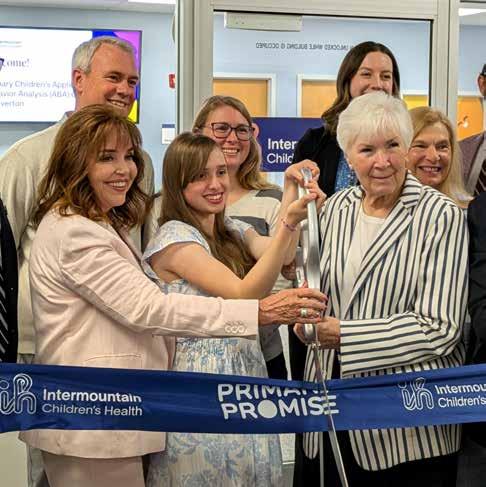
thropic support, Primary Promise surpassed its $600 million fundraising target thanks to community generosity. As a result, leaders were able to fund this critical expansion of autism services.
To donate, visit PrimaryPromise.org. To learn more about Primary Children’s Autism Services, visit PrimaryChildrens.org/Au-
tismServices.
“It’s been 15 years now since [Intermountain Riverton Hospital] has been here and not only has it provided a tremendous amount of medical care and attention to our residents, but they’ve been a very valuable stakeholder,” Riverton Mayor Trent Staggs said. l
The Riverton Journal is a monthly publication distributed directly to residents via the USPS as well as locations throughout Riverton. For information about distribution please email hello@thecityjournals.com or call our offices. Rack locations are also available on our website.
The views and opinions expressed in display advertisements do not necessarily reflect or represent the views and opinions held by Loyal Perch Media or the City Journals. This publication may not be reproduced in whole or in part without the express written consent of the owner. © 2019 Loyal Perch Media, Inc.
Bryan Scott | bryan.s@thecityjournals.com
EDITOR
Travis Barton | travis.b@thecityjournals.com
Mieka Sawatzki | mieka.s@thecityjournals.com
Lindsay Andreasen | lindsay.a@thecityjournals.com
Jason Corbridge | jason.c@thecityjournals.com
Ryan Casper | ryan.c@thecityjournals.com
Marc Davis | marc.d@thecityjournals.com
Lydia Rice | lydia.r@thecityjournals.com 385-557-1022 Rack

UT 84070
PHONE: 801-254-5974
RIVERTON TEAM
Lily (center), a teen with autism, joined philanthropists Sandi Hendry (left) and Gail Miller (right) to celebrate the opening of the Applied Behavior Analysis clinic in Riverton which will provide vital treatment for children with autism. (Peri Kinder/City Journals)
More families are raising chickens for fresh eggs and sustainability
Demand for chickens similar to Covid era as more families are embracing the trend of homesteading.
By Julie Slama j.slama@mycityjournals.com
Afewyears ago, Barbara Ingebrigsten’s adult daughter, Heidi, was hiking near the mouth of Little Cottonwood Canyon when she spotted three chicks abandoned in a plastic container near the trailhead.
Heidi brought them to her Sandy home, and after struggling to find anyone willing to raise them, she built a chicken coop. Together with her mother, they began raising the hens.
“We didn’t set out to do this, but we’ve loved the fresh eggs which have more Omega-3,” Ingebrigsten said. “It’s been quite a process to learn, but the hens love people. I open the back door, and they know I’m coming; they can recognize 100 different faces. We can hold them, one hops up and down for treats and they’re funnier than heck. Each has a different personality.”
Ingebrigsten isn’t alone.
There are more than 85 million backyard chickens in the United States, with 17 million households owning an average of five chickens, according to the National Institute of Health. The organization reports this trend grew during the COVID-19 pandemic.
Riverton City changed its city code in 2023 to a sliding scale allowing certain size lots to have anywhere from four to six chickens. Jon Thorup drove the change to combat rising egg prices and to teach his four boys self-reliance.
IFA-Draper Assistant Manager Elizabeth Maycock isn’t surprised by the rise in chicken ownership.
“More people own chickens than you think; in my circle alone, four households have chickens,” she said about her Magna neighborhood. “This morning, we got 160 chicks with our weekly delivery at 11 o’clock and they were gone within 40 minutes. It reminds us of COVID, when we were selling out within an hour. Everybody wanted the chicks to kind of start their homesteads then and we're seeing the same kind of a demand.”
Maycock believes the current bird flu, which has reduced commercial egg production, plays a big role in the trend.
“Egg prices have skyrocketed and there’s a push where people want to go back to homesteading and providing their own food. That movement has slowly risen over the last five years, but the panic surrounding the egg prices has really been an issue over the last three or four weeks and I've seen it getting worse. I've seen it creeping into Utah, up in Cache Valley. It's been hitting hard there,” she said.
Maycock, like Ingebrigsten, owns chickens herself. She currently has 14 and was purchasing five chicks to add to her flock.

“We get enough eggs for the five of us living at home and then, we give some to my son and his family every once in a while, because the four he's allowed to have don't provide enough for his small family,” she said.
In the winter, her hens average four eggs per day, but in the summer, it increases to a dozen.
“I’m not selling any right now, but I know people are selling them around $8 per dozen right now,” she said. “The stores are a little cheaper, but these are fresh while commercial eggs are sometimes three to four months old when you get them. The fresh eggs are much healthier. They have better vitamins and omegas. You can choose the feed your hen eats that then produces your egg, whether it be the organic, soy free, those types of things. Then you know what you're eating. That’s another trend; people are trying to understand what they’re eating. They're raising their own animals because they want their children to know where their food comes from.”
In early March, a dozen commercial eggs at a South Jordan Wal-Mart were selling for $6.12, while the national average was $8.53, according to the USDA in late February.
Before grabbing those cute chicks, Maycock recommends researching raising chickens.
“Read up on them before you get them. I always recommend that with any animal, so you know everything about them before you invest your time and your money. Basically, if you can take care of a dog, you can take care of a chicken; they need food, water and shelter,” she said.
Maycock said while raising chicks is enjoyable and they bond with their owners, another option is to adopt other people's flocks. Many people sell or give away their chickens when moving, allowing owners to start with adult laying hens rather than waiting six months for chicks to mature. She suggests starting with at least three hens, which will lay eggs for three to four years.
“They’re a flock animal, so they need

each other to be happy. A lot of city ordinances won't allow you to have more than six and they won't allow you to have a rooster either,” she said.
Cost is another factor to consider, as it is with any pet. While her family built their hen coop, prebuilt three-hen houses cost about $300.
“It’s an investment initially since you won’t see eggs for the first six months. They need roughly one square foot per chicken. I give them a little bit more because I let them free range a little bit. Mine sleep in the coop, they lay their eggs in there. the rest of the time they're out foraging. They're out mingling with each other, even in the winter,” she said.
While many people don’t have enough space to grow their own food, Maycock estimates one-half to one cup of feed per chicken per day. For three chickens, expect to buy a 50-pound bag for $18 every two months. Her feeder, a treadle feeder which chickens step on to open the lid and access food, costs about $100. She said it helps keep rodents and other birds away.
Maycock mentioned chickens can produce a lot of manure, but it’s compostable and great for gardening.
Another consideration is having someone care for the chickens while on vacation.
“I find one of the drawbacks when people come in is that they still want to take their vacations; many will get their neighbor kids to come on over and they let them keep the eggs for the days they watch them,” she said.
Maycock believes the benefits of her children learning self-sustainability and responsibility outweigh any of her other initial concerns.
“They understand more about their food
and what goes in to raising them,” she said, adding in the past they’ve had goats, rabbits and other birds for both food and to make yarn.
Her family got their chickens when her children were in elementary school. After a year of her teaching them, her children took over their care, which includes carrying buckets of water, carrying feed to the coop, gathering eggs and cleaning the coop.
“That’s probably the worse part,” said her daughter, Anna. “Thankfully, we don’t clean it that often. I have a Wyandotte (chicken) and she follows me around. I can call her and she comes running to me. I love her friendliness.”
She and her siblings have named their chickens after founding fathers, states and more. She is considering naming a yellow chick after her favorite flower, a sunflower, because of its color.
“The chicks don't all have to be the same; you can mix breeds,” Maycock said. “You can go about two weeks in between shipments of chicks, and they'll still integrate. They all have their own personalities. Some will be more dominant in the pecking order, and some will be more docile. It’s fun to know each one.”
After enjoying raising their first three hens so much Ingebrigsten and her daughter added three more the following year, which Ingebrigsten’s grandchildren named. They even put party hats on their chickens to celebrate family birthdays.
“I walk outside and say, ‘hi girls,’ and they come running over,” she said. “There’s nothing like raising them and the eggs are delicious.” l
Raising chicks into laying hens is a growing trend in light of raising egg prices and a desire of more people wanting to know what they’re eating. (Julie Slama/City Journals)
Eggs prices reflected the reduced supply because of an ongoing bird flu outbreak as seen here at a Smith’s grocery store in Sandy in early March. (Julie Slama/City Journals)
Comcast RISE to award millions in small business grants
Utah
By Peri Kinder peri.k@thecityjournals.com
Getting a small business off the ground, or scaling to the next level, takes more than hustle and passion. It takes resources. A small business grant can be the difference between success and failure, and Comcast is investing in success.
The Comcast RISE program will award comprehensive grant packages to 100 small businesses in Bluffdale, Draper, Herriman, Riverton, Sandy, South Jordan, West Jordan and White City. Through May, Comcast will accept applications from small business owners who are committed to growing their companies, lifting their communities and inspiring the next generation.
“The Comcast RISE program will deliver innovative and impactful resources that will make a lasting impact on small businesses in Utah. Supporting small businesses is crucial for economic development and ensuring that the backbone of our communities can thrive,” said J.D. Keller, senior vice president of Comcast’s Mountain West Region. “Among the many
things we all love about Utah is our vibrant small businesses and Comcast’s commitment to supporting them.”
Each grant includes a technology makeover (with digital services for one year), access to online entrepreneurship courses, coaching sessions, a business assessment and $5,000. Grant recipients will also receive a professionally produced TV commercial and media strategy consultation.
Scott Cuthbertson, president/CEO of the Economic Development Corporation of Utah, said small businesses are the foundation of the state’s economy. More than 90% of companies in Utah are considered small businesses, run by families, friends and neighbors. He said it’s essential that these businesses succeed.
“Comcast is such a valued partner,” Cuthbertson said. “They make critical investments in our infrastructure and we think they’re exemplary about how they invest back into the community, in particular, through this RISE program that provides needed support to our small business owners.”
Andrea Benitez is the fundraising manager at Suazo Business Center, which offers resources for economically disadvantaged businesses. Through education, workshops, and access to capital, the center has helped launch hundreds of small businesses, generating millions of dollars in revenue.
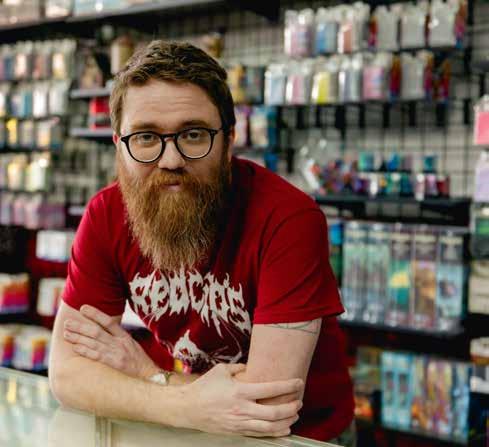
area. For us, honestly, we would love that opportunity.”
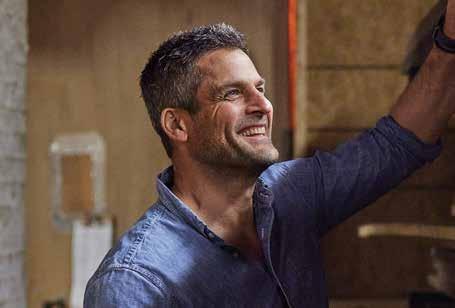

Benitez’s clients include minority and underserved populations who need direction for creating a business. They might not qualify for a loan or don’t want to go into debt to fund their dreams, so the Comcast RISE program could be a game changer for these struggling entrepreneurs.
“This Comcast grant is just a great opportunity for them to apply and help their business grow,” Benitez said. “We have lots of clients in that part of the valley and we’re going to help them apply for this grant.”
Diana Lopez owns Cakes by Edith, a popular bakery with two locations in the Salt Lake Valley. As a small business owner, she understands the obstacles faced by entrepreneurs and the many hats they have to wear to keep their businesses running.
As Cakes by Edith grows, Lopez hopes to expand to a third location where she can continue to carry on her family’s legacy. She said if she’s awarded the Comcast RISE grant, she’ll use the funds for marketing and equipment.
“There are so many trends in the baking industry and we’re trying to stay current with everything in the baking world,” Lopez said. “This opportunity with Comcast would provide for businesses in the
The southern end of Salt Lake County has seen significant growth during the last decade and is geared for more expansion. The South Valley Chamber of Commerce, in partnership with Salt Lake Community College, offers a 10-week entrepreneurial program to help small business owners find resources for success.
Jay Francis, president/CEO of the South Valley Chamber of Commerce, said small business owners face myriad challenges as they try to get an idea off the ground and that this Comcast RISE program could give them the momentum they need to create something big.
“If a business is fortunate enough to be able to receive one of these grants, I think that’s huge. It’s a real lift and a real boost,” Francis said. “I appreciate Comcast and I think more opportunities need to be afforded to small businesses. This fits in really well with things that we’re focusing on as a Chamber.”
Utah is one of five regions to receive 100 Comcast RISE small business grants this year. Recipients from Salt Lake, Boston, Grand Rapids, Nashville and Seattle will join the 14,000 entrepreneurs nationwide who have been supported through the program since it launched in 2020. For more information, visit www.ComcastRISE.com. l
Small business owners in Salt Lake County can turn possibility into progress with help from a Comcast RISE grant. (Photo courtesy of Comcast)
Kylie Hallett looks back on her year as Miss Riverton
Miss Riverton 2024 prepares for the Miss Utah pageant in June
By Peri Kinder peri.k@thecityjournals.com
AsKylie Hallett reviewed her time as Miss Riverton 2024, she described the experience as a “baptism by fire.” As someone new to pageants, Hallett discovered the only way to handle the responsibility was to go all in.
“It’s been scary to fully delve into everything,” she said. “But I thought, here we go. We’re doing all of the things… Honestly, it’s been more impactful than I could have imagined. I genuinely loved serving the community and getting to know the people of Riverton.”
Last year, the Riverton High grad competed for the title with the “More Than Your Dress Size: Inspiring Inclusivity Through Body Positivity” campaign. Growing up as a plussized girl, she didn’t see pageant queens that represented a full-figured beauty ideal.
Hallett received what she called “a good amount of backlash” from community members who didn’t think someone her size should be Miss Riverton. She was discouraged that people took the time to post mean comments on her social media pages or in her messages.
She’s also received positivity and encouragement. Hallet recalls a time when a young girl told her she wanted to start competing in pageants because of her example.
“I never imagined I could have that impact on people,” she said. “When they see somebody do it, then they realize that they can…When you break that barrier, the floodgates open. I wish I could have seen someone like me do it, but at the same time, I’m so grateful to be that person for other
people.”
Hallett’s reign was filled with community events like Riverton’s Day of Service, the Olympics kick-off party at Riverton Park, Friday Fun Nights, storytime at the city’s library and riding in parades, something she’d wanted to do since she was a little girl. Hallett even completed the Riverton Police Department Citizen’s Academy.
Her Miss Riverton’s Regency Ball fundraising event raised more than $600 for pageant scholarships and donations to the American Heart Association. Mayor Trent Staggs said Hallett has done an amazing job serving the community as Miss Riverton.
“We are incredibly grateful for her dedication and hard work,” he said. “The city wishes her the very best of luck as she prepares to compete at the Miss Utah competition in June and we look forward to her continued success in the future.”
The Miss Utah competition will be held June 12-14 at the Capitol Theatre and Hallett, a classically trained singer, is working with a pageant coach to help gear up for the event.
“[My coach] has been awesome in helping me do mock interviews and I’ve been trying on so many dresses. It’s kind of insane,” Hallett said. “I feel like I’m relearning how to walk from scratch. Pageant walking on a stage is so specific.”
The 21-year-old, enrolled at Salt Lake Community College, hopes her body positivity message will resonate with those watching the state competition. She wants to change how women talk about themselves, moving from “mean girl” self-loathing to finding love and self-acceptance.
Hallett aspires to combat the normalization of hate speech that women and girls tend to learn from a young age and wants to break the taboo around dress size.
“One of the things I hope to implement, hopefully as Miss Utah, will be self-love and body positivity groups…A lot of people think it’s the norm to hate your body and it goes

under the radar for a lot of people because it’s normal to say you hate the way you look.”
She wants the new Miss Riverton to enjoy the experience, love the community and to get involved with as many groups and activities as possible. Hallett said the year has flown by but it will be a memory she treasures forever.
“It’s gonna be really hard to put an end to the coolest thing that I’ve ever done,” she said. “It sounds cheesy but it’s something that I will have with me for the rest of my life. I will always be a Miss Riverton.”
Follow Hallett’s Miss Utah journey on Instagram @kylie.hallett. l
Riverton to keep four-person fire crews after considering dropping to three
The choice could lead to a potential property tax in the near future.
By Travis Barton travis.b@thecityjournals.com
In a budgetary discussion to explore potential financial savings, the Riverton City Council briefly considered decreasing Unified Fire staffing, before choosing to maintain the status quo.
As city officials evaluated cutting costs, one option was dropping crews at Stations 121 and 124 to three-person crews. Which would have saved the city approximately $800,000, according to City Manager Kevin Hicks.
Ultimately the council unanimously approved staying at its current standard, keeping four-person crews at both Stations 121 (12600 S. 4146 West) and 124 (12662 S. 1300 West).
Councilmember Tish Buroker, who represents Riverton on the Unified Fire board, said the question was essentially measuring if the cost savings would be worth it.
“As a council, our job is to make sure we have strong public safety in the city of Riverton, that’s our No. 1 priority,” she said. “Fire, police and providing for those public services the public cannot provide for themselves: sewer, water.
I want us to remain with four-handers at both stations.”
All elected officials were quick to point out the discussion was not a reflection upon the quality of service nor to target the fire department. Mayor Trent Staggs emphasized that several times saying the city’s enjoyed “fantastic service with UFA and we want that to be unequivocal.”
Councilmember Troy McDougal later added they try to
maximize every tax dollar of the residents’, with Councilmember Andy Pierucci pointing out this is council’s job.
“We wouldn’t be doing our jobs without these conversations,” he said prior to the council vote in March. “We need to get past being uncomfortable with conversations like this. Our job is to represent those who elected us to maximize every dollar.”
The city moved to four-person crews in 2017, initially reporting a slight increase in response times but a decrease in action time on scene. The increased staffing also allowed for Riverton to have specialty units in heavy rescue and hazmat companies.
UFA Chief Dominic Burchett explained to the council in March those specialty units require six personnel (four-person crews and two-person ambulance). Moving to a three-person crew, he explained, would require an ambulance to relocate outside the city, decreasing response times and leaving the heavy apparatus unavailable. He also said the city, due to their regional model, receives the staffing benefit of 12 firefighters for the cost of eight right now.
Officials discussed the possibility of keeping one station a four-person crew and dropping the other to three-person. Dropping one station would push out a possible property tax increase a year or two, Hicks said. Dropping both stations to three could delay it three or four years.
Several residents also spoke in favor of keeping stations at four across two council meetings in March.
Ed Amano, a Riverton resident and Salt Lake City firefighter, emphasized the four-person crews are the industry standard.
“It allows for safer operations for those of us who are serving,” he told the council.

OSHA, for example, mandates four firefighters must be present during structural firefighting, two outside and two inside.
Dave Park, a former firefighter for Salt Lake City, told the council how important four-person crews are for morale, allowing the crew to address the emergency situation as it arises with the proper staffing.
“The crew knows that they’ve got a city behind them that backs them,” he added.
The council’s consensus was the financial benefits didn’t outweigh the possible impact on public safety.
“Fundamentally I believe keeping our community safe and these emergency responders are so important,” Councilmember Tawnee McCay said. l
Miss Riverton 2024 Kylie Hallett looks back on her year of service to the community. (Photo courtesy Brook Bowen)
Station 124 in Riverton will keep its four-person staff on fire trucks after the council deliberated dropping to three-person crews. (File photo City Journals)
Riverton welcomes Atlas, a new K9 officer
Atlas will train in apprehension and narcotics detection.
By Peri Kinder peri.k@thecityjournals.com
Fromrescue dog to K9 patrol, the new Riverton Police Department K9 officer’s life is a Cinderella story.
Riverton Police Chief Shane Taylor received a call from his counterpart in Brigham City to let him know an 18-month-old Belgian Malinois had been abandoned at the city’s shelter and could possibly be trained to be a K9 officer. If Taylor was interested, Brigham City’s police department wanted to donate the pup to the RPD.
“If I was to reach out to a vendor, it would be anywhere from $14,000 to $18,000 that we would have to pay [for a K9 dog],” Taylor said. “This is really remarkable, because I didn’t have to pay, we saved a dog that was in a shelter and he has a job and he has a home to go home to and spend time with the family there.”
The Riverton community heartily welcomed the young K9 officer and a citywide contest was held to name the dog. More than 550 names were submitted and the RPD narrowed it down to seven names for the public to choose from. After 5,464 votes were counted, the name “Atlas” took first place
with 1,047 votes.
This four-legged crime fighter will play a vital role in keeping Riverton safe as he undergoes an intense 320 hours of training in apprehension and narcotics detection. His partner, Sgt. E.J. Estrada will also undergo 320 hours of training to work with Atlas.
“This dog’s never had any police training, so he’ll be learning those foundations for him to understand what I’m asking him to do, and then to practice, to perfect what I’m asking him to do,” Estrada said. “So the big thing at the beginning is producing that drive to pursue the smells that I want him to pursue.”
Although a K9 officer’s job is serious, training involves a lot of playtime and positive reinforcement as he bonds with his handler. Atlas will build on his skills as his training evolves to include longer searches or more elaborate scenarios.
This isn’t the first K9 officer Estrada has worked with. He’s also partnered with Titan, the RPD’s other K9 who previously worked with Officer Spencer Hiatt. Titan and Hiatt will now be reunited as partners.
“No two dogs are the same,” Estrada said. “So from my first dog to this dog, the quirks and the behaviors and the likes and the dislikes are a lot different. It’s learning a whole new process for motivating the dog and making sure the dog’s getting the right payments so he feels excited to do the job that I want him to

mediately as puppies and are sold for thousands of dollars.
Estrada said working, training and living with Atlas will involve a lot of patience as the K9 develops skills he needs to succeed.
“I know he has no idea what I’m asking him to do but we’re already seeing great progress with him. He’s eager and energetic, so that makes it a lot easier,” he said. “I’ve always loved dogs. I’ve always loved working with dogs. For me, there’s just nothing better than rolling around with my dog in my car all night.”
Taylor knows residents are excited to follow the progress Atlas makes and asked that people be cautious when approaching any K9 officer in a public setting. It’s appropriate to ask the dog’s handler if the dog can be touched but if the officer says no, that needs to be respected. K9 officers are trained to be alert and are doing their jobs, so always get permission before making contact.
do. Obviously, we never want to force the dog to do something. It’s not fun for him and the results are never as good.”
Most K9 candidates are acquired from Europe where they’ve been bred through lines of dogs with a history of police service and high performance. They start training im-
The police chief appreciates the Riverton community for its help in welcoming Atlas. He’s excited to add another K9 to the department.
“I think it’s amazing that Riverton City is supporting the K9 program for narcotics and apprehension,” Taylor said. “I would like to express my appreciation to the Riverton community for reaching out to help us with naming him.” l


After being left at the animal shelter in Brigham City, Atlas has become the newest officer of the Riverton Police Department. (Photo courtesy Riverton City)
Recognizing Signs and Symptoms of Stroke from Holy Cross Hospital – Jordan Valley Stroke Team
By Dr. Rebecca Reiser
We know how important it is for patients and their families to find a hospital and a care team that you can trust - especially when emergencies, like stroke, happen. That’s why our team at CommonSpirit Holy Cross Hospital – Jordan Valley is so incredibly proud to be a certified primary stroke center with thrombectomy capability. Recently, our stroke care team was recognized by the American Heart Association and received their Get with the Guidelines Gold Plus Award with Stroke Honor Roll and Type 2 Diabetes Honor Roll. This award means our facility met or exceeded the national recommendations for stroke care for our patients and it highlights our hard-working, talented stroke care team for providing excellent patient stroke care! To start, we work closely with our EMS partners to help them recognize patient stroke symptoms while they are out in the field. They are trained to let us know when they are on their way to our hospital so we can be ready for stroke patients before they even arrive. Our team is then able to evaluate each patient quickly and thoroughly to determine the best course of treatment. We have medications to help break up blood clots in the brain and a team of highly
trained vascular neurosurgeons who can remove a blood clot from the brain, also known as a thrombectomy. An important note - Holy Cross Hospital - Jordan Valley is the only hospital on the west side of the valley that has the capability of performing these state-of-the-art thrombectomies!
So, what are the signs and symptoms of stroke that you should be aware of? The easiest way to remember what to look out for is through the acronym, BEFAST:
● Balance changes
● Eye or vision changes
● Facial droop
● Arm weakness
● Speech difficulty
● Time

reduces disability among stroke survivors by 4%! That’s because about 2 million brain cells die every minute during a stroke until blood flow is restored. It is important that if you see someone showing the signs or symptoms of stroke outlined above, call for help immediately.
When you or your loved ones come to Holy Cross Hospital – Jordan Valley for stroke care, you can expect state-of-theart stroke treatment and compassionate, healing care fueled by humankindness. From the teams in the ER to the stroke care teams to the physical, occupational and speech therapists that help care for patients throughout their rehab journey, and to the neurologists that assist in care decisions from the start, you are in good hands at Holy Cross Hospital – Jordan Valley!

At CommonSpirit Health, we make the healing presence of God known in our world by improving the health of the people we serve, especially those who are vulnerable, while we advance social justice for all.
It is important to recognize the above signs and symptoms because time matters! Stroke is the fourth leading cause of death in the United States, but it is the leading cause of long-term disability. Studies show that every 15 minutes saved when a patient is experiencing stroke symptoms,
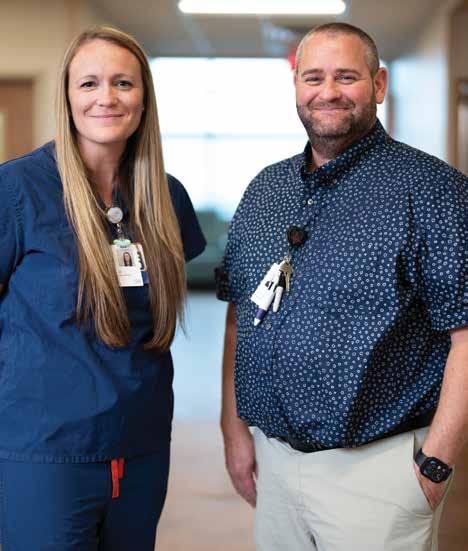
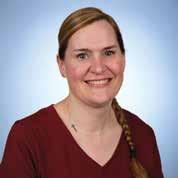
Learn more about the services, care providers and mission-driven work of the Holy Cross hospitals and CommonSpirit Health at www.holycrossutah.org.

When you need emergency care fast, the closest emergency room is a smart thing to know. You never know the level of care you’ll need when an emergency happens and choosing the right ER can make all the difference. And a hospital ER comes with the confidence of additional services right on-site.
Find emergency care close to you at mountain.commonspirit.org. CommonSpirit Health Mountain Region does not discriminate against any person on the basis of race, color, national origin, disability, age, sex, religion, creed, ancestry, sexual orientation, and marital status in admission,
SPONSORED CONTENT
Dr. Rebecca Reiser Neurologist and Stroke Director CommonSpirit Holy Cross Hospital
Failure fuels success for drone designers
Students are flying high after winning state drone competition.
By Jet Burnham j.burnham@mycityjournals.com
Jordan School District students took first and second place at the Technology Student Association State Drone Competition in March, but the pathway to their success was scattered with melted propellers, spliced batteries, burnedout servos and a lot of crashes.
“Every single part on every single drone didn’t work at some point,” Herriman High School senior Drew Hammon said. “If it works the first time, it’s going to break eventually. So, it’s just like problem solving being able to figure out super technical issues.”
West Jordan High School junior Audrey Beckstrand and JATC student Isaac Hancock, whose team took second place at the competition, went through five redesigns of their drone and burned out every servo they had before their drone was ready for competition.
“There’s like hundreds of different variants of every single part that have been at least thought of in detail,” Beckstrand said. “I don’t remember the exact numbers—I think it was like 34 printed parts, every single one redesigned at least twice.”
Learning through trial and error is a key lesson in Amber Saffen’s Unmanned Aerial Systems Design class at Jordan Academy of Technology and Careers, in which the students from Jordan District learn to design, build and program a drone.
“Because it is an engineering class, and engineering and failure goes hand in hand, we like to see the failure because then we learn from it, and we get to get the data from it and figure out
why it does not work,” Saffen said.
Saffen has been teaching drone skills for three years. The first year her students participated in a competition, only one of their drones got off the ground. She and her students have learned a lot since then.
“This year was the first year I had every single group was able to get off the ground—and now, they might have only been off the ground for half a second as their drone flipped over—but they got off the ground,” Saffen said.
Four of the seven teams at the state competition were from JATC. Hammon and teammate Tanner Gunnell took first place and will be competing at nationals in Nashville, Tennessee this summer. Saffen was thrilled with their performance.
“The amount of things that they have to get and calculate and solder correctly and mount correctly and design correctly to even get off the ground is monumental, so let alone then complete the TSA course, that anytime they do, I’m just so proud because it’s not an easy thing,” Saffen said.
The competition challenged students to design a drone that could complete specific tasks.
“We had to fly through an obstacle course and pick up a toy dinosaur and then fly it back and drop it in the zone, and then we also had to fly through the obstacle course and pick up a 3D printed cage with the dinosaur in it and fly it back,” Gunnell, a Riverton High School senior, said. “And we also had to use a camera that transmitted video on our drone to identify things throughout the run.”
Hammon said the drones they built are not like those that can be purchased at the store.
“We had to make a drone that could be really, really good at those fine movements in a small, enclosed space, which is, like, way harder,” Hammon said. ”But the real engineering
came in with these claws that we had to completely design from the ground up, attach it to a frame and work with the servos to fit all in here, and then to pick up these very irregularly sized things.” l
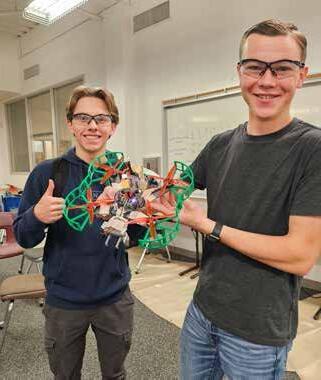



Are you a business leader? At no cost, the ElevateHERTM Challenge is easy to accept and will benefit your company.
Join businesses across Utah in our mission to elevate the stature of women’s leadership. Take the ElevateHERTM Challenge and stand with other businesses as we pledge to elevate women in senior leadership positions, in boardrooms, on management teams and on politcal ballots.

Drew Hammon and Tanner Gunnell won first place at the TSA state drone competition. (Photo courtesy Amber Saffen)
MENTAL HEALTH & WELLNESS


A publication covering local mental health and wellness around the Salt Lake Valley
Students lead the charge for mental health awareness at Mountain Creek Middle
By Julie Slama | j.slama@mycityjournals.com
Through the Say Something Squad, Mountain Creek Middle students transform mental health conversations.
At Mountain Creek Middle School, three ninth-grade students are leading a movement to raise awareness about mental health and prevent tragedies such as suicide and violence.
They are part of the Say Something Squad, a national initiative created by the families affected by the Sandy Hook tragedy, which trains students to recognize warning signs in others who may be at risk of hurting themselves or others and to alert trusted adults.
“This is teaching students how to tell people when there's a problem,” said Jada Marrott, who along with Madison Searle and Eliza Wootton, help lead their school chapter.
Since the Sandy Hook tragic school shooting in December 2012, more than 11.6 million people across the country have pledged to protect children from gun violence.
At Mountain Creek, about 40 squad members have committed to “say something” to support their peers and to prevent future tragedies.
“It was two years ago when a student, who was struggling with suicidality, came back from a mental health hospital and asked, ‘Why isn't there more suicide prevention stuff around the school?’” said school therapist Nicole Nelson. “Say Something has a free curriculum and is evidence-based. I like that it stems from family members who felt it in school and are directing it for schools nationwide to prevent any school tragedies from happening.”
The three girls decided to join the squad after attending a school assembly two years ago when a classmate shared his personal struggles.
“When (the classmate) shared his story and how he was feeling, I related so much
that I wanted to join this club and be a part of that experience of how he got better and I wanted to get better too,” Jada said.
Madison said everyone listened intently to the classmate.
“It was touching. I've never seen an assembly where it was so quiet; everyone walked out of that assembly more aware,” she said.
This spring, the Say Something Squad contributed to the school’s mental health week and an assembly where students experienced a simulation showing how the loss of a peer affects an entire community.
“It showed how one person committing suicide can affect so many people; it doesn't have to be your best friend for you to be impacted; it was powerful,” Madison said. “A lot of people feel they are lifting others burdens by ridding them of their life, but it’s not.”
Jada said the Say Something Squad can help in those situations.
“We learned you have to say something to a trusted adult. You could tell someone all day long you love them, that you don't want them to die, because it's going to hurt so many people who love them. They might not think they're loved, but they are. In their brain, they think that person who says they love them is just lying to them. That’s when a professional can help,” she said.
The Say Something Squad has been trained to develop empathy, belonging and social awareness and to help people struggling with mental illness find support. Those trainings are held throughout the year, Nelson said.
“We talk about how to prevent social isolation and look for loneliness, because those are the people who have been shown through data that they might bring a gun to school and might be a school shooter,” she said. “We talk openly in our trainings. I intentionally say, ‘suicide prevention,’ because the word ‘suicide’ is a stigma in Utah; we don't want it to be, so we talk about it open-
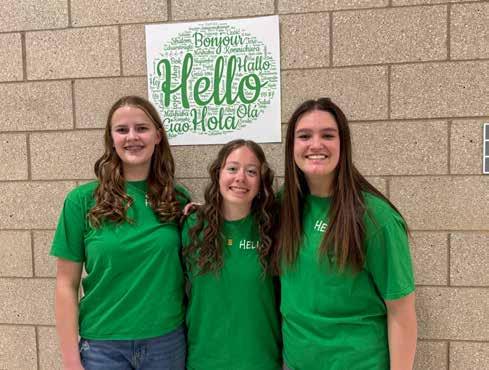
ly. The curriculum also talks about anti-bullying, empathy and compassion.”
Besides social isolation, the girls said signs such as sleep deprivation, refusal to eat, absenteeism and speaking negatively about oneself prompt them to reach out to classmates in need.
They’ve learned one of the key lessons of the Say Something Squad — reaching out to trusted adults when they notice signs of someone struggling; whether it’s joking about suicide or withdrawing from friends, speaking up could save a life, Madison said.
Eliza said teachers display posters in their classrooms to let students know they’ve been trained to help. The squad also encourages peers to turn to other trusted adults, such as parents or coaches.
The girls encourage students to use
the SafeUT app — a crisis chat and tip line which connects users with real-time crisis intervention for students, parents, educators and others — or call or text the 988 suicide and crisis hotline number.
“The important thing is to find someone,” Madison said. “In Utah, suicides are higher than it should be, especially our age. March, which is why we just had our mental health week, is the month that has the highest suicide attempts. We learned in our assembly that’s when most people are feeling lonely, sad and depressed.”
Eliza said mental health awareness is critical.
“We need to talk about suicide prevention, so people aren't afraid of it, because if
Mountain Creek Middle School ninth-graders Eliza Wootton, Madison Searle and Jada Marrott, standing by a poster made for Hello Week, are leading the Say Something Squad to raise awareness about mental health and prevent tragedies. (Julie Slama/City Journals)
Building awareness and breaking the stigma around mental health
By Peri Kinder | peri.k@thecityjournals.com
Thousands of Utahns suffer in silence, struggling with anxiety, depression, stress or burnout. Societal or self-imposed barriers often stop them from getting help but by shining a light on mental health challenges, more people might be open to taking the first step toward change.
May’s Mental Health Awareness campaign is meant to inspire crucial conversations, break down stigmas and challenge misconceptions. Psychologist Magenta Silberman, Ph.D., works in Young Adult Comprehensive Assessment and Treatment at Huntsman Mental Health Institute (501 Chipeta Way). She said issues like anxiety and depression are more prevalent than people realize.
“Mental diagnoses and psychiatric conditions don’t discriminate,” she said. “Regardless of your age, gender, socioeconomic class, ethnicity, etc., you can be impacted and some are impacted in disproportionate ways. I think there is this misperception that it only happens to a select few but there’s a spectrum of what psychiatric symptoms can look like.”
Signs vary by individual but withdrawing from friends and family, having no interest in favorite activities, changes in sleep patterns, low energy or thoughts about self-harm are all examples of potential mental health illness.
Silberman said social media has changed the perception of mental health. On the plus side, people on social platforms might relate to someone going through depression and decide to get help themselves. On the other hand, sites that promote the
Continued from front page
anyone is struggling, you don't want them to be too scared to talk about it,” she said.
Jada said they want to break the stigma which comes with talking about mental health.
“In the past, if you had a mental illness, you were considered crazy and that's why they didn’t tell anybody. At the assembly, we let them know it’s normal and they're not crazy. They can talk to somebody,” she said.
Madison agrees, pointing to the need to shift people’s perception.
“Suicide ideation and depression aren't talked about enough because people are afraid if they talk about it, suicide rates will go up. But it really is the opposite. If we never talk about it, it just becomes a bigger problem and we’ll never find a cure; we're never going to get better,” she said.
Jada understands what some of her classmates may be experiencing.
“I was severely depressed during seventh grade. I felt like I had no friends. There
idea that mental health is a matter of will can be detrimental and even dangerous.
“This sort of misunderstanding, at times mischaracterizing it as a lack of willpower, can create a lot of stigma,” she said. “If you had type 1 diabetes, that would be a life-changing piece of information. You have to make lifestyle changes and take medication, and you can live a fulfilling life. The same is true for individuals with more serious, persistent mental illness.”
For those worried about family members or friends, don’t hesitate to ask questions about what they are going through. Open discussions, without judgment, can be a powerful tool. Even when we think we know what’s best for a loved one, they might not be ready to ask for help. Being self-aware can also spur us to notice mental health challenges in our own lives. Silberman listed behaviors that shouldn’t be ignored.
“If you feel like you’re not living the life that you want to live…or things aren’t bringing you joy like they used to. You’re feeling on edge and anxious, you are not feeling in control. Thoughts or feelings are interfering with your friends, your job and just living the life you want to live. That's when I would definitely get support.”
Therapeutic modalities include cognitive behavioral therapy, dialectical behavior therapy, eye movement desensitization and reprocessing, mindfulness-based therapies and transcranial magnetic stimulation (TMS).
Dr. Thomas Rayner is a psychiatrist at NeuroHealth in South Jordan (10437 S. Temple Drive). He’s dedicated to finding the best treatment for his patients and said TMS has
were people around me, but I felt I was isolated in a crowd. I would go home and not want to do anything. I wouldn't eat. I just wanted to sleep. It was rough, because of my panic attacks. I was worried I wasn't good enough; I felt I had to live up to so many expectations of my parents, my family and my friends. I felt I had to be the perfect person for everyone else, and I realized later I just needed to be good enough for myself, because if you're not good enough for yourself, you can't be good enough for anybody else,” she said.
Talking to professionals and knowing she wasn’t alone helped.
“I'm going to have depression and anxiety. I'm going to have panic attacks. But that's OK because it's something I can use to become more empathetic to others. I don't want anybody to go through what I did, so I'm going to try to help everyone the best I can,” Jada said.
The club began the school year by building connections during Hello Week, fostering inclusivity through lunchtime activities, games and pledging to “say some-
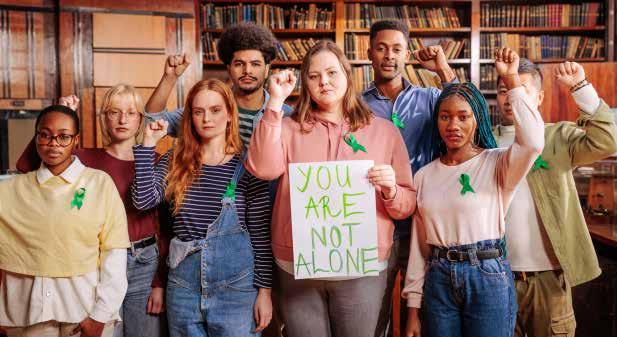
been a game changer in the battle against treatment-resistant depression.
“TMS changes brain function in key areas that are implicated in major depressive disorder and other mental health conditions,” Rayner said. “The ability to effectively treat the symptoms of depression without the barriers and side effects of medication is a giant leap forward for the field of psychiatry.”
Everyday practices like eating well, drinking water, exercising, getting enough sleep and interacting with friends can help keep mental health stable. Most people experience sadness, fear or anger, but if those emotions last too long, it could be time to talk to a professional.
For those struggling with day-to-day challenges, like getting out of bed, clean-
thing.”
Then, the squad held an anti-bullying week. The girls said prior to the week, it had been common to see slap fighting, name calling, vaping and other mean things happening at the school.
Madison said they are combating bullying through small acts of kindness such as saying hi or paying a compliment.
“I feel people can be kinder. Simple things can change somebody’s whole entire perspective on their day,” she said.
Looking back on their leadership roles, Eliza said she’s glad Say Something has made an impact at the school.
“Say Something has raised a lot of awareness; people have a better understanding of what mental health is, what a person with anxiety is dealing with, or what is going through the mind of someone dealing with depression. People have become more empathetic in understanding others,” she said. “Something good did come out of something bad.”
Jada remembers when she once masked her feelings and felt alone.
ing the house or going to work, Silberman suggested taking small steps. Put away two cups, fold one towel or straighten up one corner of the room. Doing something is better than doing nothing. Creating community can also boost mental health
“We’re social beings at our core and even for those of us that are less social, having access to people gives us new ideas,” Silberman said. “We get out of our shell and rhythm of doing the same thing that we're feeling stuck in. Just leaving the house and getting outside is helpful. Natural social opportunities can be a twofor-one to be outside and have some connection.”
For more information, visit the National Alliance on Mental Illness at NAMI.org. l
“It wasn’t until that spring when we had that assembly about mental illness when I realized I needed help,” she said. “People didn’t know the warning signs and that's why it's important to raise awareness. We need to continue to talk about this.”
With more than 34,000 schools involved nationwide, Madison said students are playing a critical part in saving lives. She said since its inception, more than 700 suicides have been prevented and 18 school shootings have been averted.
Jada said tragedies happen when people who struggle don't know how to cope with it and show up at school.
“It's really a sad thing, but it happens,” she said. “We shouldn't have to grow up with it. It shouldn't be a thing, but it is. It’s our reality. It happens. It’s ours to own, to educate people, to prevent. We’re all part of it and it’s up to all of us to say something.”
Eliza added: “That’s why it’s important to deal with mental health; it might prevent future tragedies. It’s up to all of us to speak up and support each other — because every life matters.”
Since 1949, Mental Health Awareness Month has addressed the challenges of living with a mental illness. This month, people are encouraged to share stories, advocate for change and break the stigma around mental health disorders. (Canva stock)
Music hits a special mental note
By Rebecca Olds | rebecca.o@thecityjournals.com
“Even in the 10 years that we've been open, I have seen such a shift, just in the social climate of our students,” said Sarah Davies, The Piano Place founder. “I love that music is making them slow down, unplug and really tap into what's going on inside of them.”
It wasn’t until later in life that Sarah Davies, founder of The Piano Place, realized how much music could do for not only her mood but for her mental health. It’s something that she now incorporates into her teaching philosophy.
Davies grew up like a lot of us in Utah, taking piano lessons that required practice outside of the actual lesson weekly, which some of us grew to resent rather than love.
After taking piano lessons for several years, she decided to quit lessons in the sixth grade, but never actually quit the piano. She said her mom “would often say, ‘Why do you want to quit piano when you're always playing?’”
“During that time, I actually felt like a shift within myself — I felt like I didn't have a creative outlet,” she said. “And so it was really crazy, because I kept turning to music and even though I wasn't in lessons, my mom said I would just still constantly be playing.”
I feel like a lot of times I would play, depending on my mood,” she continued. “If I was frustrated or feeling antsy about something, I would go and I'd play fast songs, and I'd want to get all my energy out that way, and sometimes I'd be feeling more calm and wanting to be inspired.”
Davies restarted lessons in 10th grade and with more enthusiasm than before. Every Saturday morning at 6 a.m. for the next two years, her mother would drive her 30 minutes to visit her piano teacher and play.
Her journey from that point set her in motion on a path of music where she played professionally at The Roof Restaurant in Salt Lake City on the 10th floor of the Joseph Smith Memorial Building before teaching lessons out of her house.
“As it was a good outlet for me, I don't think I was aware of what power music could play in someone's mental health, until I actually started teaching piano,” she said. “It was with my very own students that I began to see how important it is, especially for kids, to have an outlet to turn to.”
She noticed that music could be a positive influence on her students’ mental health in a world saturated with “social media and different things like that, that kids are going through a lot when it
comes to friends and socially.”
Music, the invaluable and unlikely tool
“Even in the 10 years that we've been open, I have seen such a shift, just in the social climate of our students,” she said. “I love that music is making them slow down, unplug and really tap into what's going on inside of them.”
“They've got to dig deep. They've got to learn to sit in the heart,” she said. “And I just love that music is the venue that they can explore all of those amazing things.”
With technology on the rise, Davies expressed concern about AI in addition to the tech already flooding the world.
“I don't think we want to find out what happens mentally when we don't have the influence of music in our lives, and instead, just turn it over to technology to fill in the gaps,” she said.
Music therapist of 18 years, Camille Savage, has worked with a range of ages from children to adults. She said that the type of music we choose to listen to usually has a lot to do with our emotions and our memory.
Mostly working with those with dementia, Savage said music uses a part of the brain that can stimulate memories and emotional responses from different periods in one’s life.
“Music hits the memory, the parts of the brain where the memory is,” Savage said. “Dementia patients may not be able to form a whole sentence anymore — that's a different part of the brain — but they can sing a whole song with me.”
It works the same for children, she said. For example, a mother singing to a child that makes them feel safe and secure could help the child later in life feel that same emotion when they hear that same song.
Different instruments can be different outlets depending on the needs of the student, Savage said. For instance, drumming can be a form of stress relief or an outlet for aggression, even for deaf students.
She called music “motivating” for people, even students to learn math.
“Music is definitely powerful,” Savage said. “The more that we're able to express in healthy ways, I think the healthier mentally that we can be and using it as a means of expression.”
At The Piano Place, concerts have always been a big part of building positive attributes such as confidence and resiliency.
“As a parent, there is nothing better than seeing your kid accomplish something hard, or stand up on a stage and


be brave,” she said. “Those moments are just absolutely priceless. And so that's one thing at The Piano Place we really emphasize.”
Davies called the ages before 12 years old as the “critical years” when laying the foundation for children to develop musical skills is the most important, with the ideal length of five years.
She said that important time is for more than just building musical talent, it’s to build resiliency and “a refuge that they can turn to and build confidence.”
In 2016, The Piano Place was built on the “core of the mission is to just figure out a way to make music fun enough and engaging enough that kids will want to stick with it.”
“For us, we are trying to help families recognize the importance of investing in a music education,” she said. “We get that it's not easy, we get that it's hard, but it is so valuable for these kids.”
The Piano Place has 12 locations in Utah and is part of a larger parent company, One Music Schools, with 12 more national locations, that employs 320 music teachers.
“Even if somebody doesn't know how to play an instrument, I think it would be important to be able to spend some time in looking over at the things that we listen to, the concerts that we go to, and really be aware of how that all does affect us,” Savage said.
Sarah Davies plays the piano as a form of keeping balance in her own life. (Photo courtesy of The Piano Place)
Live music, especially performing at concerts, can be especially good for building skills like confidence and improving mental health. (Photo courtesy of The Piano Place)
The Wellness Farm offers compassionate support for those grieving
By Rachel Aubrey | r.aubrey@mycityjournals.com
In November 2023, The Wellness Farm Foundation officially opened its doors as a nonprofit organization that helps “provide support for grief and trauma...” in Utah.
Much like the reconditioning of the property itself, the 2.5-acre retreat in Bluffdale has paralleled the emotional and mental reconditioning for licensed clinical social worker and founder Camille Hawkins who experienced her own loss and grief five years prior.
Hawkins and her husband currently fund the operations of the farm from their own pocket and rely on a staff of volunteers to help facilitate the monthly retreats and weekly workshops, geared towards adult participants. The retreats and workshops focus on a range of topics that are often associated with grief and trauma including divorce, suicide, substance abuse, infertility, and loss due to death or non-death experiences, in addition to parenting support.
The Wellness Farm, “intentionally create(s) a space where humans, nature and animals come together with the goal of fostering safety, connection, restoration, and empowerment.” Participants therefore are encouraged to look toward the farm’s two- and four-legged creatures as a mode of support. A mini horse, an emu, a mini donkey, bunnies, cats, goats, a pig, and a blind dog named Ray all live on the property and are available to help participants in their healing.
“What we're trying to do here is like... bring the realness,” Hawkins said.
Much, if not all of what happens on the farm is evidence-based as outlined in the volunteer facilitator training handout.
“Like with death grief, we've sort of changed the terminology to not get over your grief, but learn [and] grow with it,” Hawkins said.
Hawkins has had the experience and training to approach grief and trauma in terms of biology, taking into consideration the way certain chemicals and hormones made in the brain can lead to happiness. However, she knows well that connection is another vital means of healing.
“In order for us to go through something hard and then integrate it so that we can be happy and well-adjusted and live life, we need the right kind of support,” Hawkins said.
A time to grieve
Originally from Davis County, Hawkins, who was interested in medicine and psychology, earned her undergraduate degree in social work from Utah State University. She spent time shadowing a medical social worker in the Intermountain Health McKay-Dee Hospital in Ogden. Her first position was on the obstetrics floor, in
the neonatal intensive care unit.
“I really enjoyed the populations I worked with,” Hawkins said. “But I did actually struggle with being in the hospital setting.”
During her time at USU, Hawkins met her future husband Palmer, an engineering major, and the two were married in 2009.
Several years into their marriage, the couple began to realize that they were unable to grow their family and struggled with infertility. Despite her personal trauma, Hawkins started a support group for those experiencing the same things as she and her husband were, which subsequently led her to founding the Utah Infertility Resource Center in 2015 where she served as the executive director for three years.
After unsuccessful attempts with in vitro fertilization, the couple turned their attention toward adoption. Present for the births of both of her daughters, currently 9 and 10, life had, at that point, seemed good.
In 2018, the same year her daughters turned 3 and 4, Hawkins found out she was pregnant.
“We were shocked,” Hawkins said. “And you know, sure enough, it was the real deal. There was a baby growing.”
Hawkins’ joy was suddenly overshadowed by loss as she birthed her stillborn daughter Everly in November 2018.
“That was tragic and heartbreaking, and I was in the hospital,” Hawkins said. “And I was like, this is so odd, because I am usually on the helping side.”
In anticipation of being home with her newborn Hawkins had already stepped down from her position with Utah Infertility Resource Center. A blessing and a curse according to Hawkins, not having to go back to work after losing her child allowed her the downtime she needed to navigate that first hard year.
“And so, you know, I just started to think, Ok, well, what do I want to do?”
Hawkins said. “I had all this love for my baby, and she's not here, so I needed that energy to go somewhere.”
Still on her own journey to healing, she started her private counseling practice. Her first client was a woman who had lost a baby 20 years prior due to sudden infant death syndrome and subsequently became addicted to substances to deal with the grief.
Looking back on that period of her life, it wasn’t clear how she would help others work through their grief as she still reconciled her own.
“For me, at that time when my baby's heart stopped beating, I was like, how is my heart continuing to beat? Because I feel dead inside, and I want to be dead,”
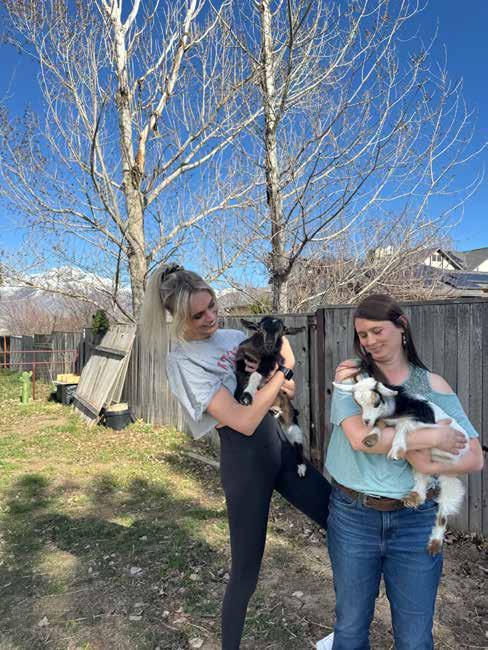
Hawkins said.
Like a scar from a bad wound, grief never goes away, but it will heal eventually.
Voices of trauma
Healing comes at various times for various reasons. Volunteer Jamie Sheranian has worked through her grief and trauma for many years after losing both her parents to drug overdose, her father when she was 3 and her mother when she was 19. As she mourned and grieved the loss of her parents, the notion of why people feel such a heavy emotion was made clear to her.
“We grieve because we love,” Sheranian said.
Formally diagnosed with post-traumatic stress disorder, Sheranian found community at the Wellness Farm and like-
minded people dealing with similar trauma.
“Even just like a couple months ago when I first came here, I feel like I've broken out of my shell even a little bit,” Sheranian said.
Both Hawkins and Sheranian invite those who are in doubt to experience what the farm has to offer for themselves.
“Until you experience it yourself, you're not going to understand,” Sheranian said. “Or even if you're not experiencing grief or trauma, these tools are things that we can use throughout our whole entire life, not just when grieving someone.”or those looking to give back and volunteer, donate, or those interested in retreats or workshops, visit the wellnessfarmut.org.
Wellness Farm volunteer Jamie Sheranian (left) and founder Camille Hawkins (right) tend to the baby goats on the 2.5-acre property, which houses several species of animals, all meant to provide support in the healing process. (Rachel Aubrey/City Journals)
the Morning,” a song from the musical “Annie Get Your Gun” and Rutherford demonstrated a high-fitness performance, encouraging audience members to exercise.
Contestant Paige Johnson was presented with the All-In Award, an honor given to the participant who puts their whole heart into the experience, lifts others and demonstrates dedication.
“This award goes to someone who has embraced every moment, faced every challenge with a smile and is a light to those around her. It’s voted on by the contestants and the Miss Riverton committee,” Osmond said. “This award celebrates the one who has shown up, stood tall and proven that she’s all-in: mind, heart and spirit.”
Also competing at the event were Stella Jane Moss, Annikah Burnham, Aeris Hansen, Nyla Marcos, Chloe Tycksen, Madi Eyre, Makayla Bird, Chrystia Lance and Renée Jaime.
“[Jane and Loren] are both very smart and talented people,” Dibble said. “Jane is really awesome... She did this last year, so she knows what she’s doing. And Loren is so smart and she’s a hard worker as well. I have no doubt that we will be quite the dream team. I’m very excited to get to know them better and work with them.”
The outgoing Miss Riverton, Kylie Hal-



lett, thanked the community for its support and appreciation. She will compete at the Miss Utah Scholarship Competition on June 12-14 at the Capitol Theatre in Salt Lake.
“If I’ve made a difference, it’s the greatest gift I could have asked for,” Hallett said. “Body positivity didn’t start with my reign, and it won’t end tonight. You are seen, you are loved and I will continue to fight for that dream. It’s impossible for me to feel like I’m giving up this title, because my year as Miss Riverton will always be with me.” l








The 2025 Miss Riverton Royalty was selected from a group of 13 young women. Olivia Dibble (center) is the new Miss Riverton with Loren DeGraaff (right) as the 1st attendant and Jane Rutherford (left) as the 2nd attendant. (Peri Kinder/City Journals)











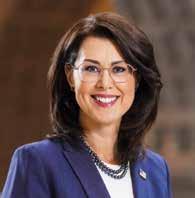



New Mental Health Crisis Center opens in Salt Lake County
Nine years ago I was sitting in my family room at 10 p.m. My adult son, who had been struggling with mental health, came upstairs and said, “Mom, I’m done.” He expressed to me his desire to end his life.
I knew he had been struggling and we were on waiting lists to get him into a doctor and therapist, but he was tired of waiting. I panicked – not knowing where to go or what to do. “Do I call 911? Should I take him to an emergency room?” I thought. I couldn’t believe that I didn’t know what to do. I was serving on the county council at the time and thought that if I didn’t know what to do, certainly other people would be feeling the same way.
I took him to the emergency room and we sat for hours, only to be sent home with a list of providers on our insurance. It was so frustrating!
After that I learned about the 24/7 crisis line, now 988, that people can call for help. We utilized that a few other times over the following weeks. Eventually, my son got the help he needed and I appreciate that he allows me to share his story in an effort to help others.
Because of these experiences I was determined to get more involved in our mental health system by serving on the state’s behavioral health crisis response commission. This enabled me to help advocate for a three digit crisis line, and more resources throughout the state. Our county council donated land for a new mental health receiving center and also gave funds for an expansion of the proposed facility. Since counties are the mental health authorities - as designated by the state - it made sense for us to engage on a deeper level.
On March 28, we cut the ribbon on the new Kem and Carolyn Gardner Mental Health Crisis Care Center. This facility, located at 955 W. 3300 South in Salt Lake County, helps



people facing mental health emergencies. This 24/7 facility offers immediate assistance, including crisis intervention and short-term stabilization, all in a caring, safe environment.
By bringing together mental health professionals, social workers, and community partners, it aims to streamline access to services—so individuals can quickly receive assessments, therapy, and connections to longer-term support. The center also helps reduce the strain on hospitals and the justice system by guiding people toward recovery, rather than unnecessary hospitalization or incarceration. Overall, it’s designed to be a welcoming place where anyone in crisis can find immediate help, understanding and hope.
A few weeks before the opening of this center, I took my son with me to tour the facility. It was touching to have him there with me as we talked about how needed this is and how we wished it was around nine years ago. I got emotional thinking about the many family members who won’t have to wonder where to take their struggling loved one if they are having a mental health crisis.
I know our family is not alone. Many of you have reached out to tell me of your family struggles with mental health. It
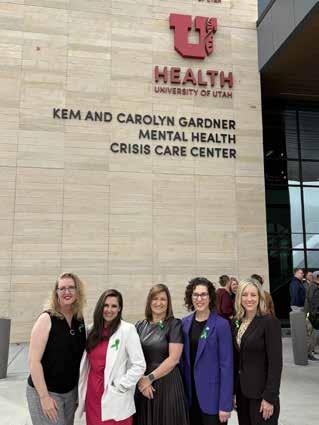
is so hard! I hope you know we are working hard to combat this. The opening of this new facility is another step in that direction.













Mental Health AWARE NESS MONTH














Community Heroes: Roller skating coaches bring heart and soul to the sport
Meet the coaches directing artistic skaters one glide at a time.
By Peri Kinder peri.k@thecityjournals.com
Doug and Diane Adams are the unsung community heroes behind the scenes of Utah Skating Academy. Whether teaching wobbly beginners or mentoring professional roller skaters, the couple have influenced the sport for more than 50 years. Together, they have coached more than 50 national champions and their artistic roller skating teams have won top spots in the Southwest Region and Pan American International competitions.
West Jordan resident Steven Geoghan nominated the duo as City Journals Community Heroes. The 70-year-old roller skater thought they deserved attention for the good they do for their students and the sport.
“Even when I left this morning, they were trying to encourage me and tell me I did a good job, even though I have my own thoughts about that,” Geoghan said. “They’ll work with anybody and it’s been good for me.”
The Adams are more than instructors. They are advanced certified coaches with USA Roller Sports and the Society of Roller Skating Teachers. As cheerleaders on wheels, they help skaters of any age build confidence and learn to enjoy the art of skating.
The Utah Skating Academy is based at Classic Fun Center (9151 S. 255 West) in Sandy, where they’ve been coaching since they moved from Ukiah, California, to Utah in 2017. The





academy provides multiple artistic skating lessons each week for beginners of all ages and more experienced skaters with figure, loops, freestyle, dance and show.
“There were some surveys done back in the early 60s with teenage girls and skating was the most popular sport in the country. Today, things have changed a little bit,” Doug Adams said. “We’ve got something for all ages. My wife is really good at coming up with promotions and fun ideas.
Thanks to the 2024 TV series “Roller Jam,” the Utah Skating Academy has seen a resurgence of interest in the sport. The show features roller-dancing teams from across the country and one of the Adams’ former students, Josiah Bishop, competed on the show.
On Saturday mornings, the academy offers four classes: freestyle, dance, figure/loop and one-star/two-star. On Wednesday afternoons, another one-star/two-star class is offered, along with skills and drills. Mondays and Tuesdays are reserved for travel team practice.
In 1961, Doug started skating in Walnut Creek, California. He skated as an amateur for 10 years, before turning professional in 1970. Later, he returned to Walnut Creek to operate the rink then moved to Ukiah where he owned and operated a roller rink for 30 years. That’s where he met Diane. Her parents were former rink operators and had retired in Ukiah. Diane went to work for Doug and they were married two years later.
“We are an artistic skating club, which means figures, loops and freestyle, which is jumping and spinning, and dance,” he said. “I used to coach roller derby and I’ve coached hockey, so I’ve kind of done everything in skating that there is to do. We prefer the artistic and we’ve got a nice artistic club. We’ve got about 45 skaters here and our program is four days a week.”
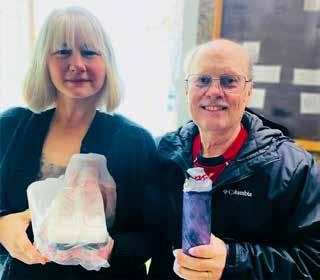
For more information about classes, competitive teams, events and skating packages, visit SkateCityUkiah.com.
“We do what we do because we love it. We have a big love for the sport,” Doug said. “Not only have I been in it all this time, but I’m honored to be able to give back. We love giving back to the community.”
To submit your Community Hero, email hero@thecityjournals.com. l





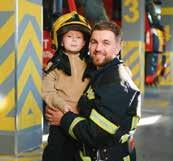
Diane and Doug Adams have performed with and coached artistic roller teams for more than 50 years. They were nominated as Community Heroes in the Sandy area. (Photo courtesy of the Adams)

































I was born with the fashion sense of a platypus: lots of assorted parts coming together but nothing cohesive, nothing you could call style.
It’s not that I haven’t tried to dress nice. I even did some fashion research and read an article that said I should find clothing that fits my personality to feel confident about my wardrobe. My personality is a cross between a hibernating bear and a librarian, so I guess I should wear furry blankets and mustard-colored cardigans? Done.
The article also said to implement different colors and patterns, and not to be afraid to get out of my comfort zone. But my comfort zone is so comfy. Hence the name.
For a long time, my fashion palette consisted only of black; or gray, if the occasion called for levity. Walking through the grocery store, I was often mistaken for a murder of crows, but that might have been because of all the flapping and squawking.
So, I banned black from my closet, except for 13 black blouses because you never know when you’ll attend a My Chemical Romance concert. Then I decided any new clothes I purchased couldn’t be black. Now my closet is filled with a rainbow of dark navy, charcoal, espresso and eggplant for when I’m feeling whimsical.
Peri Kinder Life and Laughter
Out of Style

The article suggested trying different styles. Trendy boxy tops look adorable on the pages of fashion magazines but turned me into SpongeBob. Maybe I should stop wearing striped socks with squeaky black shoes and white laces.
I just don’t know how to look effortlessly stylish although Vogue breaks it down into 79 manageable steps. I stopped reading after the one step suggested I wear one thing that scares me. Crocs are the most frightening thing I could think of. Nope.
Once, I was working at an event and was given a T-shirt to wear. I threw on a pair of shorts and called it good. My coworker showed up in her T-shirt matched with cute capris, colorful espadrilles and a rakish beret. I felt like Gollum standing next to her.
If I have to attend any social event, I get fashion paralysis, completely incapable of choosing an outfit. If the event is really fancy, I’ll spend at least 47 days riddled




with anxiety about what to wear. My husband says, “Go buy something new,” but that makes it even worse because trying on clothes is a torture device invented during the Spanish Inquisition.
First, the options are overwhelming. Second, what if I choose something too dressy? I don’t want to look like a wedding cake if the event calls for shortbread. Third, I want my clothes to feel comfy, which is the complete opposite of style. No wonder fashion models always look so angry.
The one area in fashion that I do shine is footwear because Chuck Taylors can be worn with anything. Barefoot is also an option I employ from May through October. (By Halloween, the soles of my feet are as tough as a Kevlar and as grungy as a music festival’s porta-potty.)
Oscar Wilde, my style guru, said, “Fashion is a form of ugliness so intolerable that we have to alter it every six months.”
If every fashion trend comes back again, I’ll just stick with what I love: clothes that hide salsa stains and are super soft. Anna Wintour would have some disparaging glances to throw my way but it’s better than my platypus fashion that looks like I just crawled out of a swamp.





